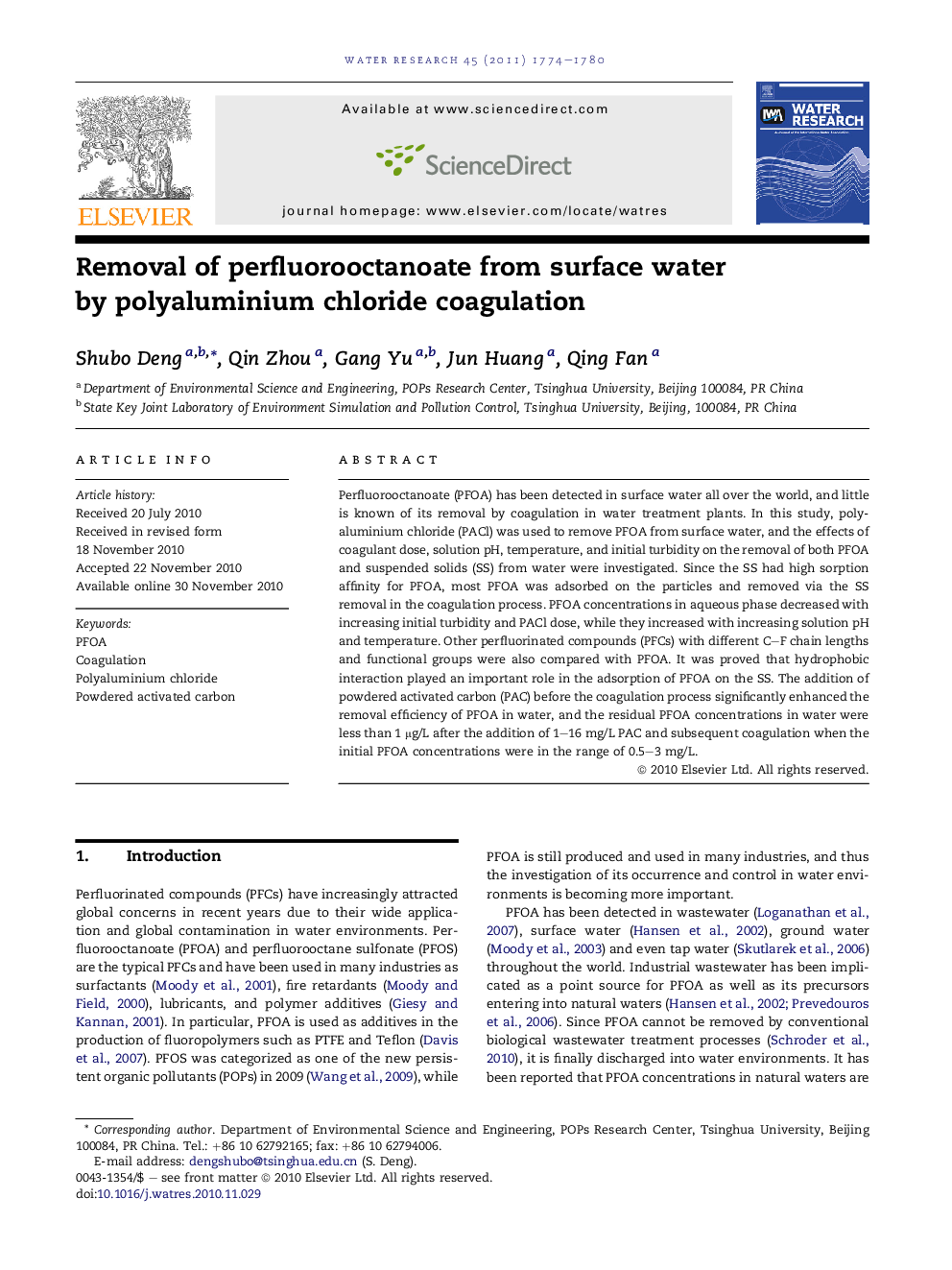| Article ID | Journal | Published Year | Pages | File Type |
|---|---|---|---|---|
| 4483389 | Water Research | 2011 | 7 Pages |
Perfluorooctanoate (PFOA) has been detected in surface water all over the world, and little is known of its removal by coagulation in water treatment plants. In this study, polyaluminium chloride (PACl) was used to remove PFOA from surface water, and the effects of coagulant dose, solution pH, temperature, and initial turbidity on the removal of both PFOA and suspended solids (SS) from water were investigated. Since the SS had high sorption affinity for PFOA, most PFOA was adsorbed on the particles and removed via the SS removal in the coagulation process. PFOA concentrations in aqueous phase decreased with increasing initial turbidity and PACl dose, while they increased with increasing solution pH and temperature. Other perfluorinated compounds (PFCs) with different C–F chain lengths and functional groups were also compared with PFOA. It was proved that hydrophobic interaction played an important role in the adsorption of PFOA on the SS. The addition of powdered activated carbon (PAC) before the coagulation process significantly enhanced the removal efficiency of PFOA in water, and the residual PFOA concentrations in water were less than 1 μg/L after the addition of 1–16 mg/L PAC and subsequent coagulation when the initial PFOA concentrations were in the range of 0.5–3 mg/L.
Research highlights► We study PFOA removal from surface water by polyaluminium chloride coagulation. ► Coagulation is efficient for PFOA removal, and most PFOA species are adsorbed on the solid phase. ► Combination of adsorption and coagulation can further remove residual PFOA in water. ► Both electrostatic and hydrophobic interactions are involved in PFOA sorption on the particles.
